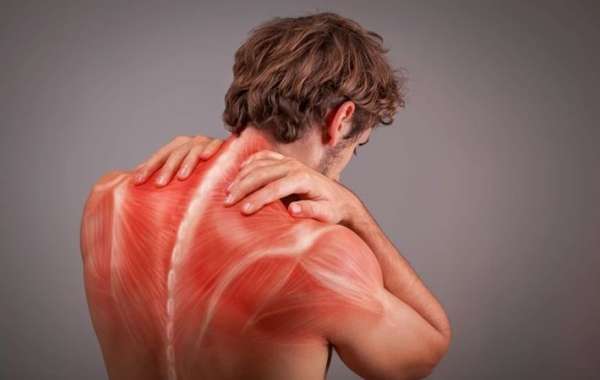Living with chronic pain can be an overwhelming and exhausting experience. Traditional methods of pain relief, such as medications and physical therapy, can be effective but often come with limitations and side effects. Fortunately, the field of pain management is evolving rapidly, with new and innovative techniques emerging that offer promising alternatives for those seeking relief. Below, we explore some of the most cutting-edge pain relief methods that you may not have tried yet.
1. Cryotherapy: Icing Out Pain
Cryotherapy, or cold therapy, is a treatment that involves exposing the body to extremely low temperatures for a short period. This technique is believed to reduce inflammation, numb nerve irritation, and promote healing. Whole-body cryotherapy chambers, where the body is exposed to temperatures as low as -200°F for a few minutes, have become increasingly popular among athletes and individuals with chronic pain conditions like arthritis or fibromyalgia.
The cold exposure triggers a fight-or-flight response, leading to a release of endorphins—natural painkillers in the body. Additionally, cryotherapy can improve blood circulation and reduce muscle spasms, making it a viable option for those who haven’t found relief through conventional methods.
2. Pulsed Electromagnetic Field Therapy (PEMF): Healing Through Frequencies
PEMF therapy uses low-frequency electromagnetic waves to stimulate cellular repair and reduce pain. This non-invasive therapy has been used for decades to aid in bone healing, but recent advancements have expanded its application to a wide range of conditions, including chronic pain, neuropathy, and even depression.
By placing a PEMF device near the area of pain, the electromagnetic pulses penetrate deep into the tissues, promoting cellular repair and reducing inflammation. Many users report significant pain relief after just a few sessions, making PEMF an attractive option for those who have exhausted other avenues.
3. Virtual Reality Therapy: Immersive Pain Distraction
Virtual reality (VR) has made significant strides in the world of gaming, but its applications in pain management are just beginning to be realized. VR therapy works by immersing patients in a simulated environment, effectively distracting them from their pain. This is particularly effective for patients with chronic pain conditions, as it can reduce the perception of pain and even rewire the brain’s response to painful stimuli.
Studies have shown that VR therapy can be beneficial for conditions like burn injuries, phantom limb pain, and even labor pain. By engaging multiple senses in a fully immersive experience, VR therapy provides a powerful tool for pain relief without the need for drugs or invasive procedures.
4. Acoustic Wave Therapy: Sound Waves for Pain Reduction
Acoustic wave therapy, also known as shockwave therapy, uses sound waves to stimulate healing and reduce pain. Originally developed to break up kidney stones, this technology has been adapted to treat musculoskeletal pain, such as tendinitis, plantar fasciitis, and chronic back pain.
The sound waves increase blood flow to the affected area, promote tissue regeneration, and decrease inflammation. This therapy is particularly effective for soft tissue injuries and chronic pain conditions that have not responded to other treatments. Patients typically undergo a series of sessions, with many reporting significant improvements in pain and mobility.
5. Cannabidiol (CBD) Therapy: Nature’s Pain Reliever
Cannabidiol, commonly known as CBD, is a compound derived from the cannabis plant that has gained immense popularity for its pain-relieving properties. Unlike THC, the psychoactive component of cannabis, CBD does not produce a “high,” making it an attractive option for those seeking natural pain relief.
CBD works by interacting with the body’s endocannabinoid system, which plays a key role in regulating pain, inflammation, and immune responses. It is available in various forms, including oils, creams, capsules, and edibles, allowing for versatile applications depending on the type and location of pain. Research has shown that CBD can be effective in treating conditions such as arthritis, neuropathic pain, and even migraines.
6. Transcutaneous Electrical Nerve Stimulation (TENS): Electrical Relief
TENS is a non-invasive pain relief method that uses low-voltage electrical currents to stimulate the nerves and reduce pain signals to the brain. TENS units are small, portable devices that can be placed on the skin near the area of pain. The electrical pulses interfere with the transmission of pain signals, providing temporary relief for conditions such as back pain, osteoarthritis, and sciatica.
While TENS therapy has been around for some time, advancements in technology have made the devices more user-friendly and effective. Some newer models even allow users to customize the intensity and frequency of the electrical pulses for a more personalized experience.
7. Dry Needling: A Modern Twist on Acupuncture
Dry needling is a technique similar to acupuncture but focuses on targeting specific trigger points within the muscles. Unlike traditional acupuncture, which is based on ancient Chinese medicine principles, dry needling is rooted in Western medical research and is used primarily to relieve muscle pain and stiffness.
By inserting thin needles into these trigger points, dry needling can release muscle tension, improve blood flow, and reduce pain. It is particularly effective for treating myofascial pain syndrome, a condition characterized by chronic muscle pain and tenderness. Although the idea of needles might be daunting, many patients experience significant relief after just a few sessions.
8. Cold Laser Therapy: Light-Based Healing
Cold laser therapy, also known as low-level laser therapy (LLLT), uses low-intensity lasers to penetrate the skin and promote cellular repair. This therapy has been shown to reduce pain and inflammation, accelerate tissue healing, and improve circulation. It is commonly used for conditions like arthritis, tendonitis, and carpal tunnel syndrome.
The laser light stimulates the mitochondria within the cells, increasing energy production and promoting healing. Unlike high-powered lasers used in surgery, cold lasers do not generate heat, making this a painless and non-invasive treatment option.
9. Floatation Therapy: Weightless Relaxation
Floatation therapy involves lying in a sensory deprivation tank filled with water and Epsom salt, creating a sensation of weightlessness. The absence of external stimuli allows the body and mind to enter a deep state of relaxation, which can significantly reduce pain and stress.
The high concentration of magnesium in the Epsom salt also helps to reduce inflammation and muscle tension. Floatation therapy has been found to be particularly effective for chronic pain conditions like fibromyalgia, as well as for individuals dealing with high levels of stress or anxiety.
10. Regenerative Medicine: Healing from Within
Regenerative medicine focuses on harnessing the body’s own healing capabilities to repair damaged tissues and reduce pain. Techniques such as platelet-rich plasma (PRP) therapy and stem cell therapy have gained attention for their potential to treat conditions like osteoarthritis, tendon injuries, and even degenerative disc disease.
PRP therapy involves drawing a small amount of the patient’s blood, concentrating the platelets, and injecting them into the area of pain. The platelets release growth factors that stimulate tissue repair and reduce inflammation. Similarly, stem cell therapy uses the patient’s own stem cells to regenerate damaged tissues, offering a promising alternative to surgery or long-term medication use.
Conclusion
As the understanding of pain continues to evolve, so too does the range of treatments available to manage it. The innovative pain relief techniques discussed above offer new hope for those struggling with chronic pain. Whether through advanced technology, natural remedies, or regenerative medicine, these methods provide alternative pathways to relief that go beyond traditional pain management strategies. If you’re tired of relying solely on medications or if conventional treatments have failed to provide relief, consider exploring these innovative options under the guidance of a healthcare professional.




